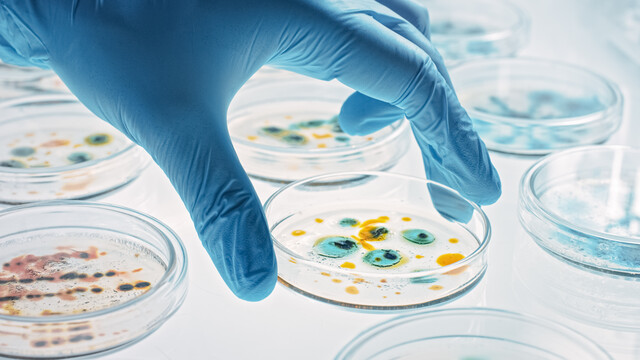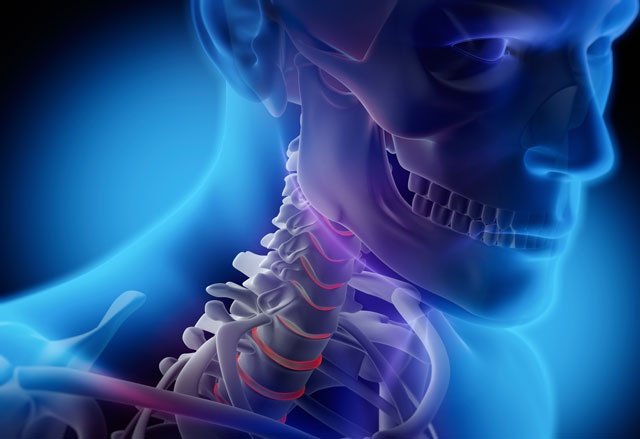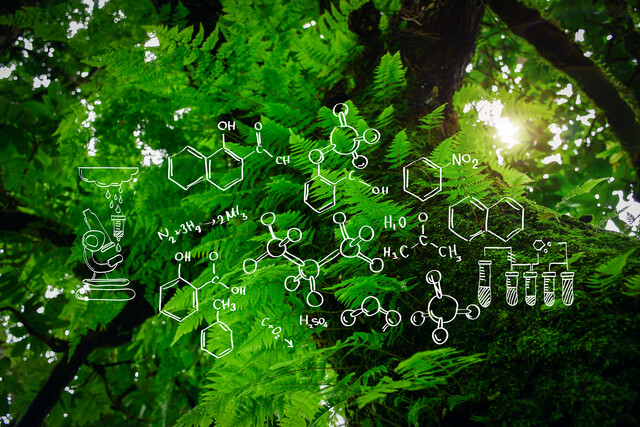Online Class: Introduction to Cell and Molecular Biology

no certificate
with CEU Certificate*
-
20Lessons
-
47Exams &
Assignments -
1,276Students
have taken this course -
18Hours
average time -
1.8CEUs
Course Description
The Fascinating World of Cell and Molecular Biology
From microorganisms invisible to the naked eye, to the intricate internal workings of larger organisms, cell and molecular biology plays a pivotal role in shaping our understanding of life. This discipline doesn't merely remain confined to the boundaries of a laboratory. Instead, it influences diverse fields, from environmental science to the frontiers of healthcare and medicine.
Course Overview
In this comprehensive course, we will guide you through the mesmerizing landscape of cell and microbiology. Our journey will begin by exploring the foundational building blocks of all life forms. Understand the remarkable components within living entities, and grasp the interplay between organisms and their environment. How do living organisms thrive, adapt, and sometimes clash with external factors?
As we delve deeper, the course will introduce you to the intricacies of DNA and RNA - the genetic blueprints of life. Dive into the fascinating world of protein structures, and follow their journey along cellular pathways. For those with a keen interest in current biomedical research, our lessons will also provide insights into pressing issues such as pathogen mechanisms, the emergence of cancer cells, and the much-debated realm of stem cell research.
Did you know that, as of 2023, an estimated $5.8 billion has been invested in stem cell research globally? Such research promises revolutionary therapies for conditions previously deemed untreatable.
Cell and molecular biology, though intricate in nature, holds the keys to many of the mysteries surrounding our existence. Beyond its numerous applications in various sectors, the core principles of this subject illuminate many phenomena we encounter daily. By the end of this course, not only will you have gained profound knowledge, but you will also develop an enriched perspective of the world around you.
Each lesson is designed meticulously, ensuring a blend of theoretical knowledge, current statistics, and real-world applications. With a combination of assignments and exams, we evaluate your progress and understanding of each module.
Why Choose This Course?
Cell and molecular biology is not just a subject; it's a lens through which one can view the world. The implications of this field are vast and, as the data suggests, its relevance is only growing. With increasing investments in biotechnological research and its applications in medicine, agriculture, and environmental science, expertise in this area is highly sought after.
So, if you're curious about life's inner workings or wish to pursue a career in the expansive field of biology, this course promises to be a fulfilling and enlightening experience. Dive in, and let's begin this incredible journey together!
- Completely Online
- Self-Paced
- 6 Months to Complete
- 24/7 Availability
- Start Anytime
- PC & Mac Compatible
- Android & iOS Friendly
- Accredited CEUs
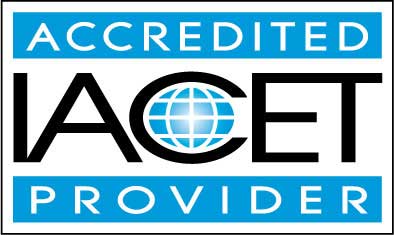
Course Lessons
Lesson 1. Cell and Molecular Science: From DNA to Frontiers
The evolution of molecular biology began with early cell discoveries, culminating in the DNA structure revelation. This progress lays the foundation for advanced genetic research, facilitating personalized treatments and biotechnological innovations in agriculture and environmental fields.Lesson 2. Cellular Alchemy: The Energetic and Structural Fundamentals of Life
Fundamental to understanding life, the study of cells and their structural composition unravels the universal principles binding all living organisms. Insights from cellular biology fuel innovations in medicine, agriculture, and technology, leveraging these principles for future advancements.Lesson 3. Energy and Metabolism: The Chemical Dance of Life
Chemical reactions invisibly choreograph life, supporting the growth and survival of organisms across ecosystems. Understanding the balance between biosynthesis and degradation reveals fascinating insights into nature's adaptability and sustainability.Lesson 4. DNA: Life's Blueprint
DNA's profound influence extends from catalyzing medical breakthroughs to sustaining biodiversity; the genetic code weaves life's multifaceted tapestry. This molecular saga invites future genetic pioneers to tackle ethical considerations and embrace the awe-inspiring mysteries it unveils.Lesson 5. Proteins: The Pillars of Cellular Functionality
Advanced characterization techniques, like X-ray crystallography and NMR spectroscopy, provide detailed views into protein architecture. These methods enhance our understanding of cellular machinery and facilitate targeted drug design by revealing protein dynamics.Lesson 6. Protein Dynamics: The Regulatory Symphony
Protein regulation in cells is like a finely tuned symphony, ensuring that proteins, essential for cellular functions, are produced and activated precisely when needed. Recent advancements in technology have demystified how multiprotein complexes dynamically respond to cellular signals, offering insights with potential for medical breakthroughs.Lesson 7. Dynamic Gateways: Exploring the Cell Membrane
The cell membrane's pivotal role extends beyond protection, enabling selective permeability, signal processing, and cellular communication, supported by diverse membrane proteins like transporters and identity markers critical for biochemical coordination. Ongoing research into membrane dynamics and protein structures advances our understanding, with potential applications in synthetic biology and disease treatment innovation.Lesson 8. Molecular Genetics 101
Genetics serves as the foundation for exploring life, health, and evolution, revolutionized by Mendel's inheritance theories and advancing from classical to molecular genetics. Genetic research unravels complexities that aid in combating hereditary diseases.Lesson 9. Cell Cycle Dynamics: Prokaryotes vs Eukaryotes
The regulation of the cell cycle is maintained by checkpoints, ensuring accuracy and preventing uncontrolled division, such as cancer. Future medical therapies aim to correct cell cycle errors, paving the way for personalized treatments.Lesson 10. Cell Cycles and the Intricacy of Cellular Processes
In the cell cycle, life operates as a finely-tuned orchestra where cells meticulously grow, replicate DNA, and divide under strict regulation to prevent errors from becoming permanent mistakes. This process includes specific phases such as the preparation of interphase, division of mitosis, and the vigilance of checkpoints, all ensuring cellular harmony and balance.Lesson 11. Cell Communication: Ligands, Receptors, and Beyond
G-Protein-Coupled Receptors (GPCRs) and enzyme-linked receptors represent pivotal signaling modalities, influencing processes from taste perception to cell growth. Dysfunctions in these pathways often underpin diseases, making them valuable targets for pharmaceutical interventions.Lesson 12. The Symphony of Signaling Pathways in Cells
Signal transduction translates external signals into cellular actions through a cascading series of biochemical events, akin to messages passed through a sophisticated communication network. Scientific investigation has focused on pathways like Wnt, essential for cellular development and implicated in cancer research and stem cell management.Lesson 13. The Art and Science of Cellular Transport: A Journey Through Ion and Molecule Movement
Cells utilize complex transport systems, including diffusion and active transport, to regulate molecular exchange across their plasma membranes. The balance between energy usage and passive processes ensures cells maintain homeostasis while responding dynamically to their environments.Lesson 14. Proteins on the Move
In the cellular realm, sophisticated transport systems resemble a well-coordinated courier service, ensuring newly synthesized proteins reach their designated locales. The Golgi apparatus plays a pivotal role, modifying proteins before they embark on their cytoplasmic or extracellular voyages.Lesson 15. Epithelial Tissue: Structure, Function, and Impact
Lesson 16. The Intricacies of Cancer: A Deep Dive into Cell Mutation and Disease
Cancer's insidious spread is rooted in genetic mutations disrupting the cellular harmony, akin to a conductor losing control of an orchestra. Advances in treatment, public awareness, and prevention efforts like vaccination and lifestyle changes are critical strides towards a cancer-free future.Lesson 17. Decoding Cancer: The Genetic and Cellular Saga
Cancerous cells persistently grow and adapt by ignoring programmed death pathways and exploiting DNA repair failures, leading to tumor formation. Like unstable architecture with rapid yet poor construction, aggressive cancer cells disrupt tissue integrity, heralding swift tumoral invasion.Lesson 18. Pathogenic Life Cycles and Transmission Modes
Pathogens, the invisible perpetrators of disease, cycle through hosts by evading immune responses and exploiting resources before spreading, shaping human history with their impact on health. Understanding and combating them involves vaccination, antimicrobial treatments, and robust public health measures.Lesson 19. Bioinformatics: Bridging Biology and Technology
With innovative tools like genome sequencing and machine learning, bioinformatics deciphers the complexities of genomics, proteomics, and more. These advancements support sustainable management of genetic resources, combating food scarcity, and preserving biodiversity.Lesson 20. Stem Cell Research: Bridging Science and Ethics
Stem cell research, positioned at the crossroads of advanced biology and ethical debate, explores the extraordinary regenerative capability of stem cells, promising potential medical breakthroughs yet posing significant moral considerations. With their capacity to transform into various cell types, stem cells hold keys to treating degenerative diseases, but ethical concerns regarding embryonic stem cells challenge progression in this promising field.
Learning Outcomes
- Define the historical milestones in molecular biology, including key discoveries and contributions, and evaluate their impact on current scientific practices.
- Identify and describe the applications of molecular biology in medicine, agriculture, and environmental sustainability, and assess their significance in addressing contemporary challenges.
- Demonstrate understanding of cell theory by explaining the three main tenets: unity of life, continuity, and cellular autonomy.
- Recognize the similarities and differences between prokaryotic and eukaryotic cells, including their structural components and functions.
- Demonstrate understanding of energy metabolism by distinguishing between autotrophs and heterotrophs, and explaining their ecological roles.
- Identify the role of carbon in forming complex organic molecules and its significance in biosynthetic and degradative processes.
- Define DNA and RNA structures by identifying key components, including nucleotides, nitrogenous bases, and strand formations.
- Demonstrate protein synthesis by describing the roles of DNA and RNA in transcription and translation, including the function of mRNA, tRNA, and rRNA.
- Describe the role of secondary structures such as alpha helices and beta sheets in the stability and function of proteins.
- Explain how techniques like X-ray crystallography and NMR spectroscopy contribute to identifying and characterizing protein structures.
- Define how phosphorylation alters protein function to regulate cellular activities by examining specific examples of protein complexes within the cell.
- Identify key differences between positive and negative gene regulation mechanisms and describe how these mechanisms impact enzyme synthesis in prokaryotic cells.
- Define and describe the structure and composition of the cellular membrane, identifying its main components, such as the phospholipid bilayer and membrane proteins.
- Demonstrate mastery of lesson content at levels of 70% or higher.
Additional Course Information

- Document Your Lifelong Learning Achievements
- Earn an Official Certificate Documenting Course Hours and CEUs
- Verify Your Certificate with a Unique Serial Number Online
- View and Share Your Certificate Online or Download/Print as PDF
- Display Your Certificate on Your Resume and Promote Your Achievements Using Social Media

Choose Your Subscription Plan
No Certificate / No CEUs
This course only
| Includes certificate | X |
| Includes CEUs | X |
| Self-paced |

|
| Instructor support |

|
| Time to complete | 6 months |
| No. of courses | 1 course |
Certificate & CEUs
This course only
| Includes certificate |

|
| Includes CEUs |

|
| Self-paced |

|
| Instructor support |

|
| Time to complete | 6 months |
| No. of courses | 1 course |
Certificates & CEUs
Includes all 600+ courses
| Includes certificate |

|
| Includes CEUs |

|
| Self-paced |

|
| Instructor support |

|
| Time to complete | 12 Months |
| No. of courses | 600+ |
Certificates & CEUs
Includes all 600+ courses
| Includes certificate |

|
| Includes CEUs |

|
| Self-paced |

|
| Instructor support |

|
| Time to complete | 24 Months |
| No. of courses | 600+ |
Student Testimonials
- "I really liked the instruction that was available for this class. I was pushed to my limit of understanding." -- Kathy W.
- "This course was great and the instructor was amazing. The videos at the end of each lesson were most helpful because it helps me to learn more when hearing something than reading." -- Sophia C.
- "Instructor was just great...kept on motivating me. I found all the topics helpful and very interesting. The tutor was always there to help me out and I had a great memorable time. Thanks Universal Class.. I'm planning to take on another course." -- Kenneth A.
- "Easy access around the course." -- Carrie M.
Related Courses
-
 74 hours
7.4 CEUs
Medical Billing and Coding Course Bundle
+ More Info
74 hours
7.4 CEUs
Medical Billing and Coding Course Bundle
+ More Info
-
 33 hours
3.3 CEUs
Comprehensive Medical Terminology 1 & 2
+ More Info
33 hours
3.3 CEUs
Comprehensive Medical Terminology 1 & 2
+ More Info
-
 17 hours
1.7 CEUs
ICD-10: Medical Coding
+ More Info
17 hours
1.7 CEUs
ICD-10: Medical Coding
+ More Info
-
 18 hours
1.8 CEUs
Medical Terminology 101
+ More Info
18 hours
1.8 CEUs
Medical Terminology 101
+ More Info
-
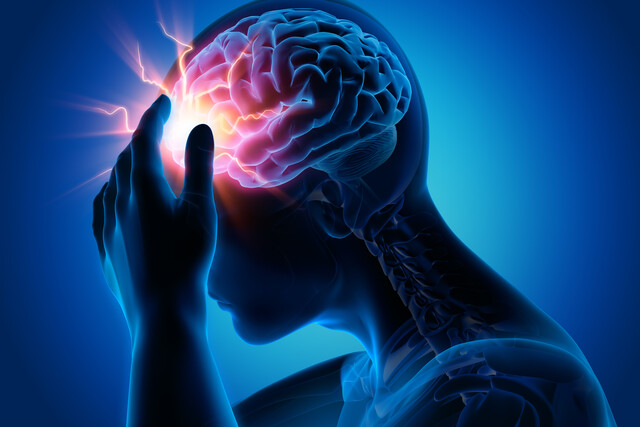 7 hours
0.7 CEUs
Understanding Concussions
+ More Info
7 hours
0.7 CEUs
Understanding Concussions
+ More Info
-
 17 hours
1.7 CEUs
Medical Terminology 201
+ More Info
17 hours
1.7 CEUs
Medical Terminology 201
+ More Info
-
 6 hours
0.6 CEUs
HIPAA Compliance 101
+ More Info
6 hours
0.6 CEUs
HIPAA Compliance 101
+ More Info


